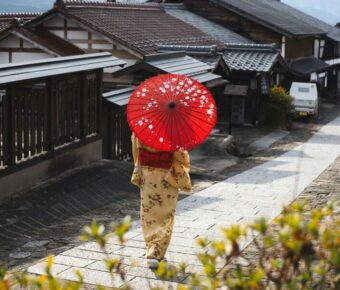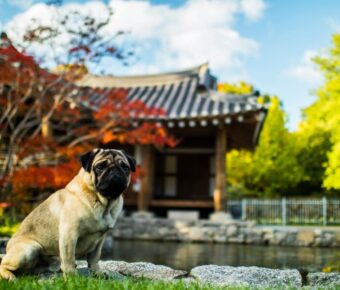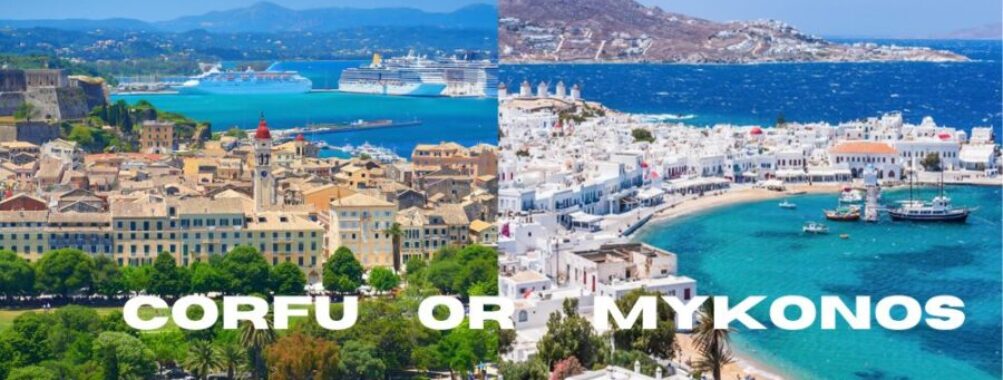
Corfu vs Mykonos: Which Greek Paradise Matches Your Travel Style in 2025?
Greece offers two stunning island destinations that draw travelers year after year – Mykonos and Corfu. These islands showcase different sides of Greek culture and beauty, making the choice between them an exciting challenge for vacation planning.
While Mykonos dazzles with its glamorous party scene and iconic white architecture, Corfu captivates visitors with its lush green landscapes and rich cultural heritage influenced by Italian and British rule. Both islands also have some of the finest beaches in Greece, though each has its own character.
The islands reflect two distinct Greek experiences. Mykonos embodies the classic Cycladic lifestyle with its cubic buildings and windmills, perfect for those seeking vibrant nightlife and pristine beaches. Meanwhile, Corfu’s Venetian architecture and olive groves offer a more laid-back Mediterranean atmosphere for travelers wanting to explore historic sites and natural beauty.
Contents
- Geographical Overview
- Location in Greece
- Size and Population
- Historical Significance
- Ancient History
- Cultural Heritage
- Cultural Insights
- Local Traditions
- Cuisine
- Festivals and Events
- Natural Attractions
- Beaches and Coastlines
- Landscapes and Hiking Trails
- Natural Reserves and Caves
- Key Destinations and Landmarks
- Corfu Town
- Mykonos Town
- Notable Windmills
- Archaeological Sites
- Accommodation and Hospitality
- Hotels and Resorts
- Budget Stays and Hostels
- Entertainment and Nightlife
- Beach Clubs and Nightclubs
- Live Music and Events
- Shopping and Commerce
- Local Markets
- Boutique Shops
- Dining and Cuisine
- Gourmet Experiences
- Casual Dining Spots
- Traditional Greek Tavernas
- Travel Tips and Practical Information
- Getting Around
- Language and Communication
- Currency and Expenses
- Frequently Asked Questions
- What unique attractions distinguish Corfu from Mykonos for travelers seeking a cultural experience?
- How do the nightlife and party scenes compare between Mykonos and Corfu?
- In terms of beaches and natural beauty, how do Corfu and Mykonos differ for visitors looking for relaxation?
- Which island, Corfu or Mykonos, offers a more authentically Greek atmosphere and local experience?
- For those interested in history and architecture, how does the heritage of Corfu contrast with that of Mykonos?
- Considering food and cuisine, what culinary delights can one expect when choosing between Corfu and Mykonos?
- More Travel Guides
Geographical Overview
Corfu and Mykonos sit in different Greek seas, with distinct geographical features that shape their character. Corfu’s lush greenery contrasts sharply with Mykonos’s rocky terrain.
Location in Greece
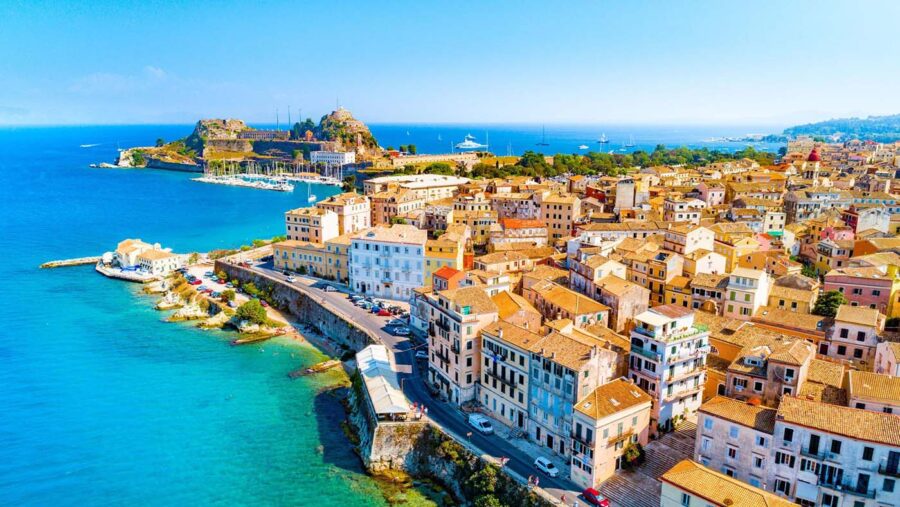
Corfu sparkles in the Ionian Sea off Greece‘s northwestern coast, near Albania. It’s part of the Ionian Islands group, known for their emerald waters and Italian influences.
Mykonos belongs to the Cyclades island group in the Aegean Sea. It sits right in the middle of these islands, about 150 kilometers southeast of Athens.
The distance between these islands means they face different weather patterns. Corfu gets more rain, making it greener. Mykonos stays drier and sunnier most of the year.
Size and Population
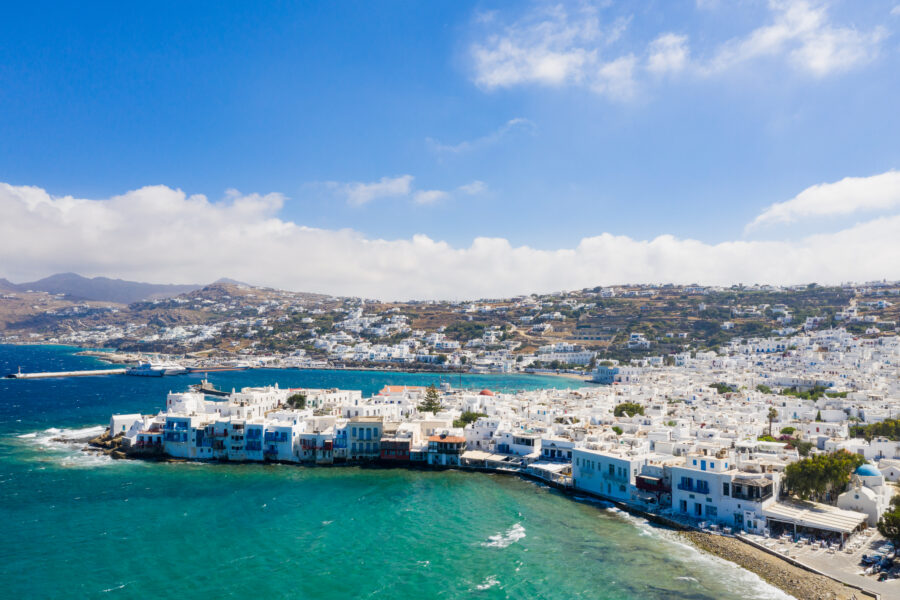
Corfu is much bigger at 593 square kilometers, compared to Mykonos at just 85 square kilometers. This size difference affects what you can do on each island.
Corfu has about 120,000 permanent residents spread across many villages and towns. Its main city, Corfu Town, houses roughly 30,000 people.
Mykonos has a smaller year-round population of around 10,000 people. This number swells dramatically during tourist season, when the island hosts up to 50,000 visitors daily.
The islands’ sizes influence their infrastructure. Corfu has more roads and public transport options. Mykonos is easier to explore in a day due to its compact size.
Historical Significance
Both Mykonos and Corfu have rich historical legacies shaped by different civilizations and cultural influences that make them unique Greek destinations. Each island tells its own fascinating story through ancient ruins, architecture, and preserved traditions.
Ancient History
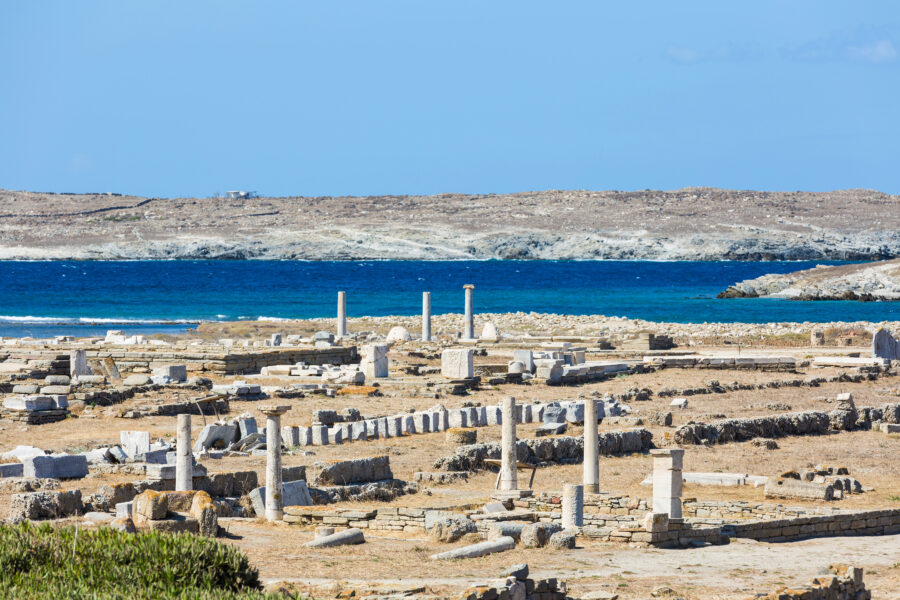
Mykonos played a key role in Greek mythology as the battleground where Zeus fought the Giants. The island’s most important historical connection is its proximity to Delos, the sacred birthplace of Apollo and Artemis. Delos became one of the most important religious and trading centers in ancient Greece.
Corfu’s ancient history dates back to Greek mythology too – it was said to be Odysseus’s last stop before returning home to Ithaca. The island was first settled by the Corinthians in 734 BC, who developed it into a major naval power.
Cultural Heritage
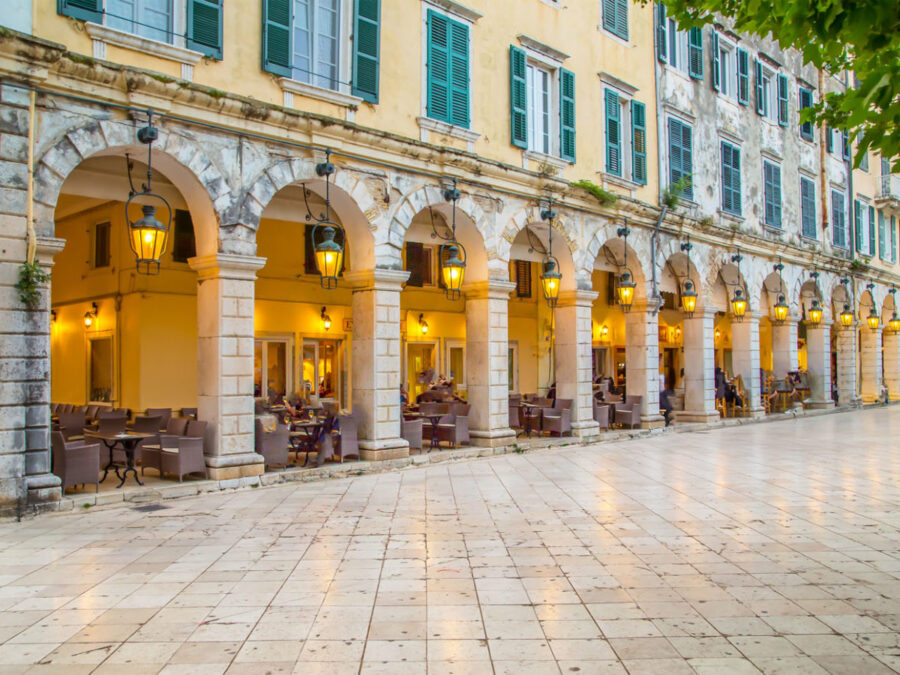
Mykonos retains much of its traditional Cycladic architecture with iconic white-washed buildings and blue-domed churches. The island’s famous windmills, built by Venetians in the 16th century, stand as symbols of its past trading importance.
Corfu’s heritage shows strong Venetian influences from nearly 400 years of rule. The island’s Old Town features stunning Venetian fortresses, palaces, and grand buildings. The mix of Greek, Venetian, French, and British influences created Corfu’s unique cultural identity.
The British left their mark through architecture like the Palace of St. Michael and St. George. They also introduced cricket, which locals still play today.
Elegant mansions line Corfu’s Liston promenade, inspired by Paris’s Rue de Rivoli. This blend of architectural styles earned Corfu’s Old Town UNESCO World Heritage status.
Cultural Insights
The islands of Mykonos and Corfu showcase distinct cultural identities shaped by different historical influences and geographic locations. Each destination offers unique traditions, flavors, and celebrations that give visitors a true taste of Greek island life.
Local Traditions
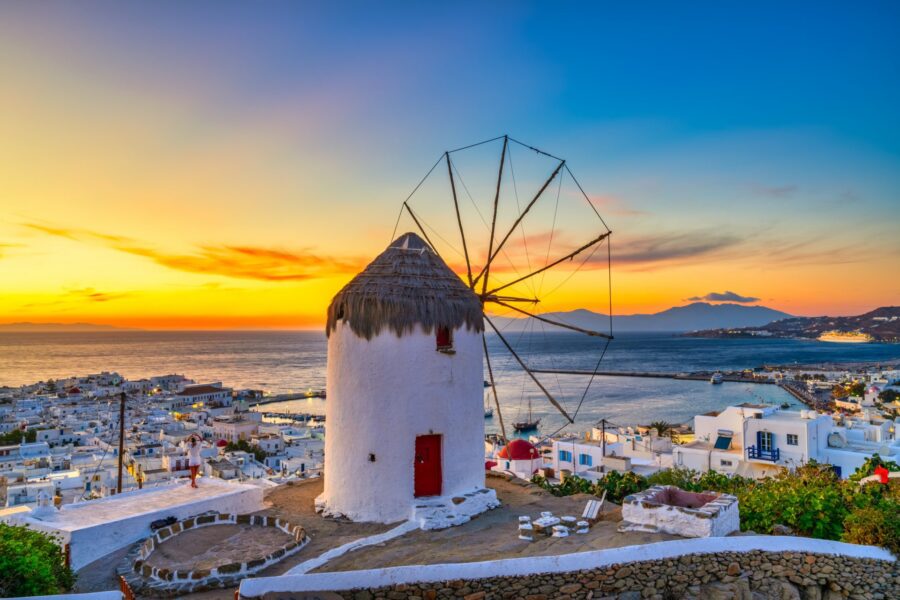
Mykonos embraces its Cycladic heritage with iconic white-washed buildings and traditional windmills. Local craftspeople still practice age-old techniques in jewelry making and textile weaving.
The narrow streets of Mykonos Town come alive with elderly women dressed in traditional clothing, sweeping their doorsteps each morning – a cherished daily ritual that’s been practiced for generations.
Corfu’s traditions reflect strong Venetian, British, and French influences. The island’s old town is filled with grand palaces and elegant mansions. Local women still make traditional lace by hand, while skilled artisans craft olive wood into beautiful keepsakes.
Cuisine
Mykonian Specialties:
- Kopanisti (spicy cheese spread)
- Fresh-caught sea urchins
- Louza (cured pork)
- Amygdalota (almond cookies)
Corfiot Favorites:
- Sofrito (veal in wine sauce)
- Pastitsada (spiced beef with pasta)
- Bourdeto (spicy fish stew)
- Kumquat liqueur
Both islands take pride in their fresh seafood. Mykonos serves simple, grilled catches of the day. Corfu’s cuisine shows Italian touches with more complex sauces and pasta dishes.
Festivals and Events
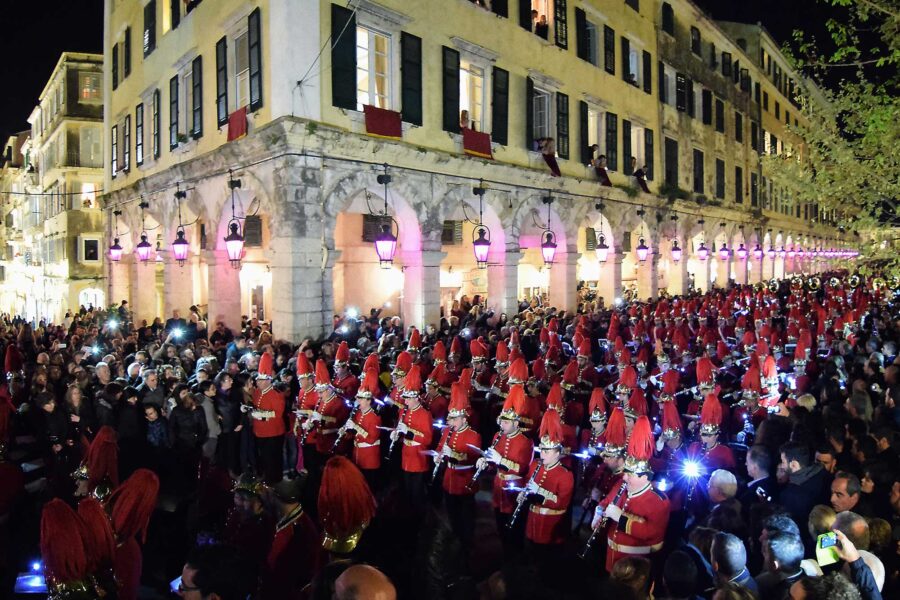
Mykonos celebrates the Harvest Festival each September with wine tasting and traditional dance performances. The island hosts major beach parties during summer months.
Religious festivals are important on both islands. Corfu’s Easter celebrations are famous throughout Greece, featuring pot-throwing ceremonies and elaborate processions.
The Feast of Saint Spyridon brings Corfu’s streets to life four times yearly. Locals carry the saint’s remains through town accompanied by marching bands and choirs.
Natural Attractions
Both Greek islands feature stunning natural wonders that attract nature lovers and outdoor enthusiasts year-round. The pristine beaches, dramatic cliffs, and hidden coves create picture-perfect settings for unforgettable adventures.
Beaches and Coastlines
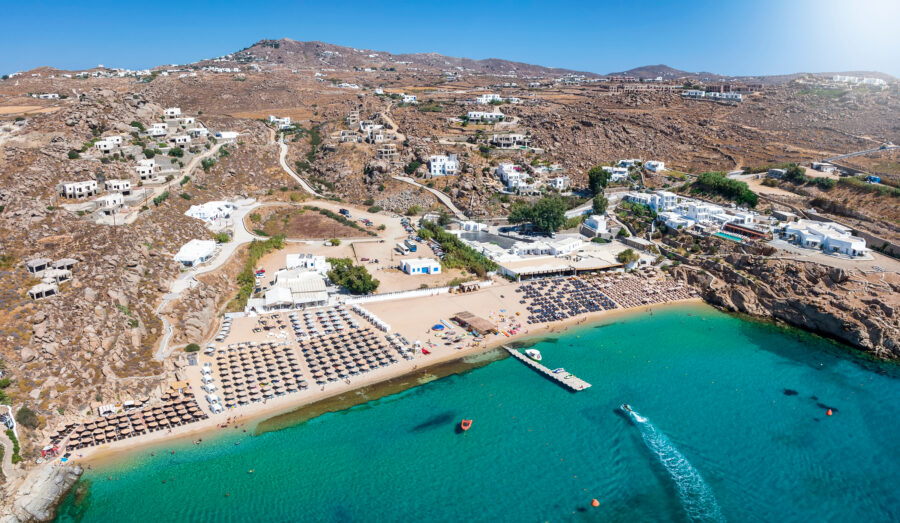
Mykonos boasts golden sandy beaches with crystal-clear waters. Paradise Beach stands out with its soft sand and perfect swimming conditions. The southern coast features organized beaches with beach clubs and water sports facilities.
Corfu’s coastline offers more variety. The west coast has dramatic cliffs and wild beaches, while the east coast provides calm, shallow waters ideal for families. Paleokastritsa beach amazes visitors with its six bays surrounded by olive groves.
Both islands have hidden coves perfect for snorkeling. Mykonos tends to have stronger winds, making it popular with windsurfers. Corfu’s sheltered bays provide better conditions for swimming and kayaking.
Landscapes and Hiking Trails

Corfu wins in terms of diverse landscapes. The island’s interior features rolling hills covered in olive groves and cypress trees. Mount Pantokrator offers hiking trails with amazing views of Albania and the Greek mainland.
Mykonos has a more arid landscape with gentle hills. The island’s walking paths connect traditional villages and windmills. The terrain is easier to navigate but offers fewer shade spots.
Popular hiking spots in Corfu include the Corfu Trail, a 220km path through the island’s most beautiful areas. In Mykonos, the coastal path from Paraga to Paradise Beach provides stunning sea views.
Natural Reserves and Caves
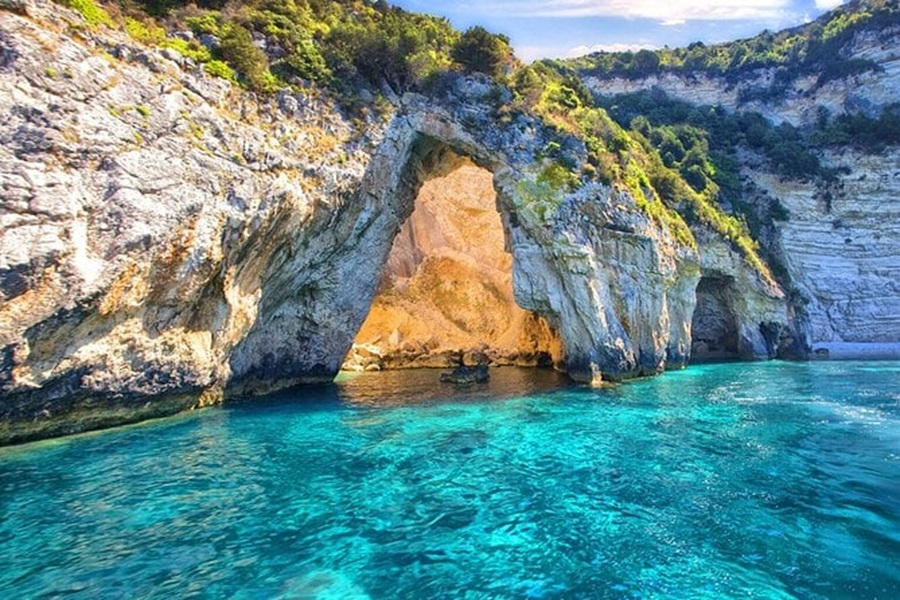
Corfu’s natural reserves protect unique ecosystems. The Korission lagoon hosts rare bird species and features beautiful sand dunes. The Blue Caves near Paleokastritsa showcase stunning rock formations.
Mykonos has fewer caves but features interesting rock formations along its coast. The island’s small wetlands near Panormos beach serve as rest stops for migrating birds.
Dragonera Cave in Corfu attracts spelunkers with its impressive stalactites. The cave system extends deep into the limestone cliffs and features clear underground pools.
Key Destinations and Landmarks
Both islands feature iconic landmarks that tell stories of their rich cultural heritage. These historic sites and architectural wonders give each destination its distinct character and charm.
Corfu Town

The UNESCO World Heritage site of Corfu Town stands as a testament to Venetian influence on Greek architecture. The Old Fortress, built in the 6th century, towers above the town’s skyline and offers stunning views across the Ionian Sea.
The Liston Arcade, inspired by Paris’s Rue de Rivoli, hosts charming cafes beneath its elegant arches. You’ll find locals and tourists alike sipping coffee while watching the world go by.
St. Spyridon Church, with its distinctive red dome, houses the remains of the island’s patron saint. Its impressive bell tower is the highest point in town.
Mykonos Town
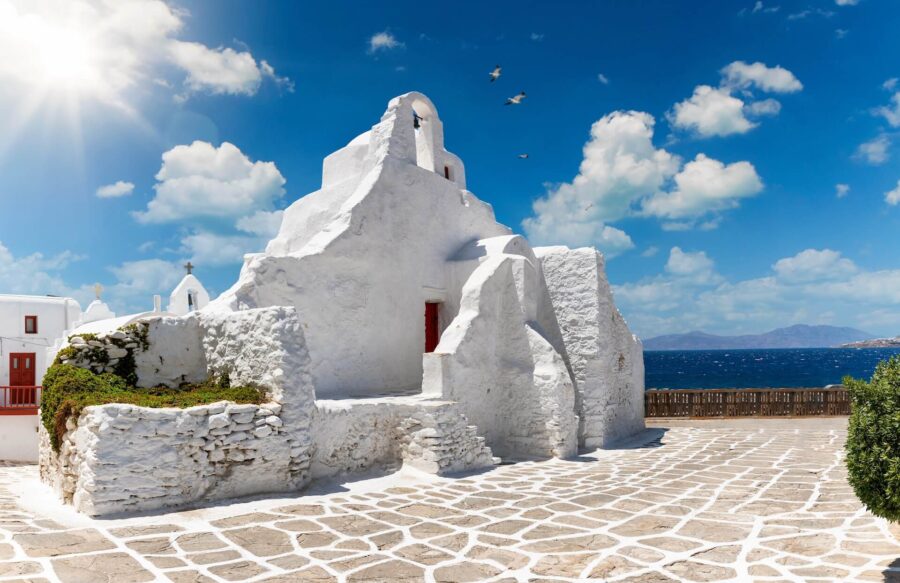
The narrow marble streets of Mykonos Town, known locally as Chora, wind through a maze of whitewashed buildings with bright blue doors. Little Venice, with its colorful balconies hanging over the sea, offers some of the most photographed spots on the island.
The Paraportiani Church complex showcases unique Cycladic architecture. Built over several centuries, it actually consists of five separate churches merged into one striking structure.
The waterfront area called the Yalos buzzes with activity. Fishing boats bob in the harbor while trendy boutiques and seafood restaurants line the promenade.
Notable Windmills
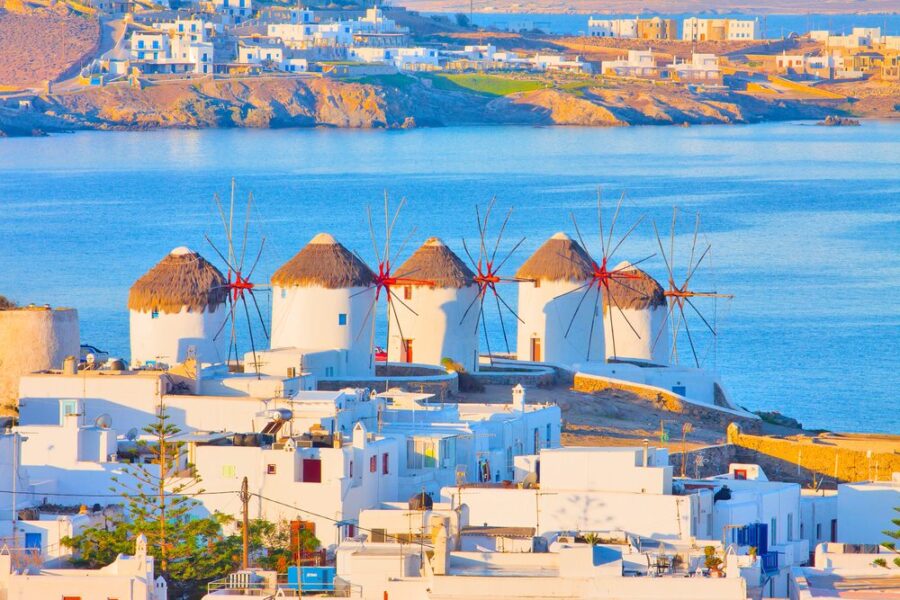
Mykonos’s famous windmills stand proud on the hill above Chora. Built by Venetians in the 16th century, these cylindrical structures once powered the island’s grain industry.
The Kato Windmills, a group of five restored structures, are now museums. Their white walls and pointed thatched roofs create perfect silhouettes against blue skies.
The Boni Windmill still contains original milling equipment. It opens to visitors during summer months, showing how grain was processed centuries ago.
Archaeological Sites
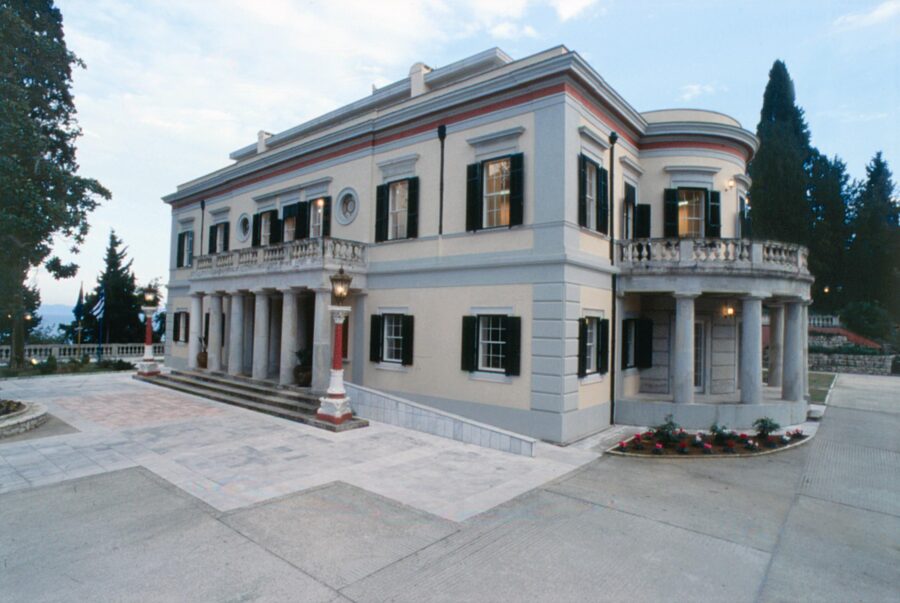
The Palaiopolis Museum in Corfu displays artifacts from the ancient city of Korkyra. The site includes remains of ancient temples and public buildings dating back to the 8th century BC.
Mykonos serves as a gateway to the sacred island of Delos. This UNESCO site, birthplace of Apollo and Artemis, features remarkable ruins including the Terrace of Lions and the House of Dionysus.
Mon Repos Palace in Corfu combines archaeological significance with royal history. Built in 1826, it sits amid ancient ruins and was the birthplace of Prince Philip.
Accommodation and Hospitality
Both Mykonos and Corfu provide diverse lodging choices that match different travel styles and budgets. These Greek islands excel at hospitality, though each has its own distinct character.
Hotels and Resorts
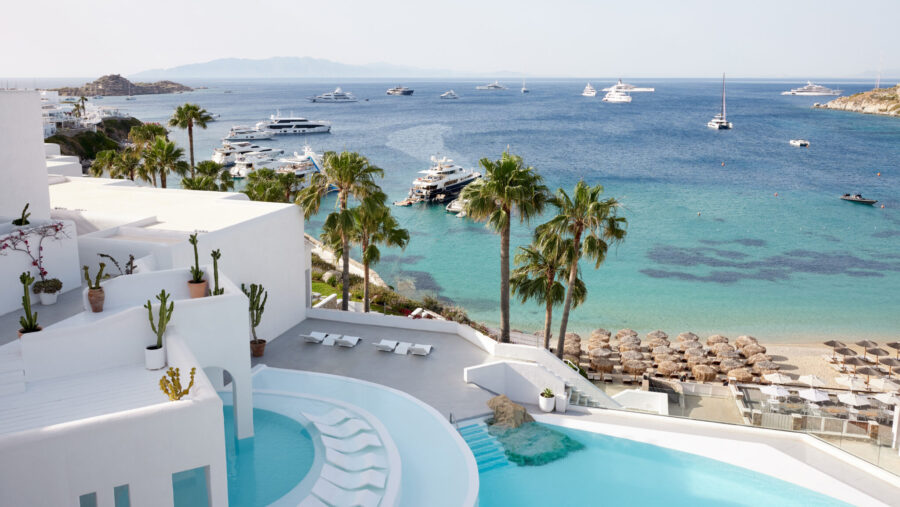
Mykonos leans heavily toward luxury, with many high-end boutique hotels and 5-star resorts dotting the coastline. Most luxury spots feature infinity pools and private beach access.
The island’s top resorts often include celebrity-focused amenities like private helipads and exclusive beach clubs. Room rates in peak season can reach €1,000+ per night at premium properties.
Corfu takes a more traditional approach to upscale stays. The island’s grand hotels often occupy restored Venetian mansions and historic buildings.
Many Corfu resorts spread across larger grounds, offering tennis courts, multiple pools, and family-friendly facilities. Prices tend to be 30-40% lower than similar properties in Mykonos.
Budget Stays and Hostels
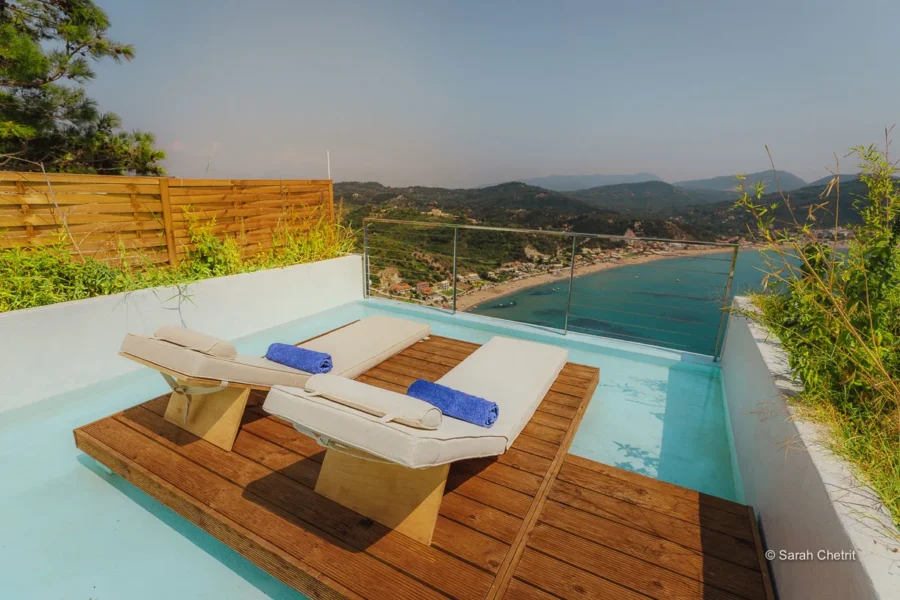
Corfu wins for budget travelers with its wide selection of family-run guesthouses and affordable apartments. Many cost €40-80 per night and include basic kitchenettes.
The island has several quality hostels in popular areas like Corfu Town and Paleokastritsa. Dorm beds typically range from €15-25 per night.
Mykonos has limited budget options, but some exist in towns like Ornos and Platis Gialos. Basic rooms start around €80-100 in low season.
Small family hotels and rental rooms can be found away from popular beaches. These offer better value but may require a vehicle to reach main attractions.
Entertainment and Nightlife
These two Greek islands offer distinct party experiences. Mykonos draws international DJs and celebrities to its famous clubs, while Corfu provides a mix of upbeat venues and relaxed cultural events.
Beach Clubs and Nightclubs
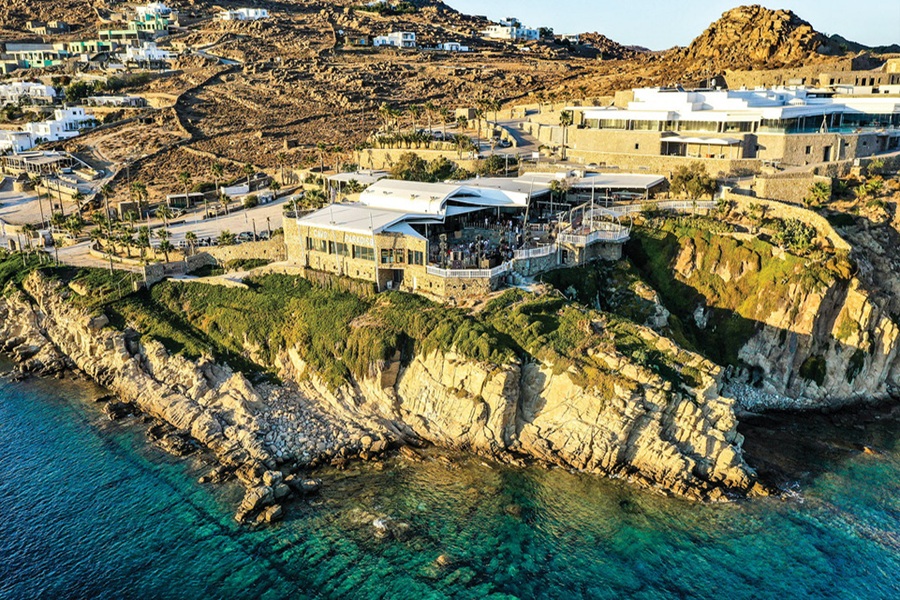
Mykonos stands out as Greece’s premier party destination. Paradise Beach Club and Cavo Paradiso host world-famous DJs from June through September. The clubs often stay packed until sunrise, with dancing on the beach and by the pool.
Corfu’s clubs are more low-key but still lively. The busiest spots are in Kavos, where venues like Future Club and Atlantis draw younger crowds. Many beach bars turn into dance spots after dark.
Live Music and Events
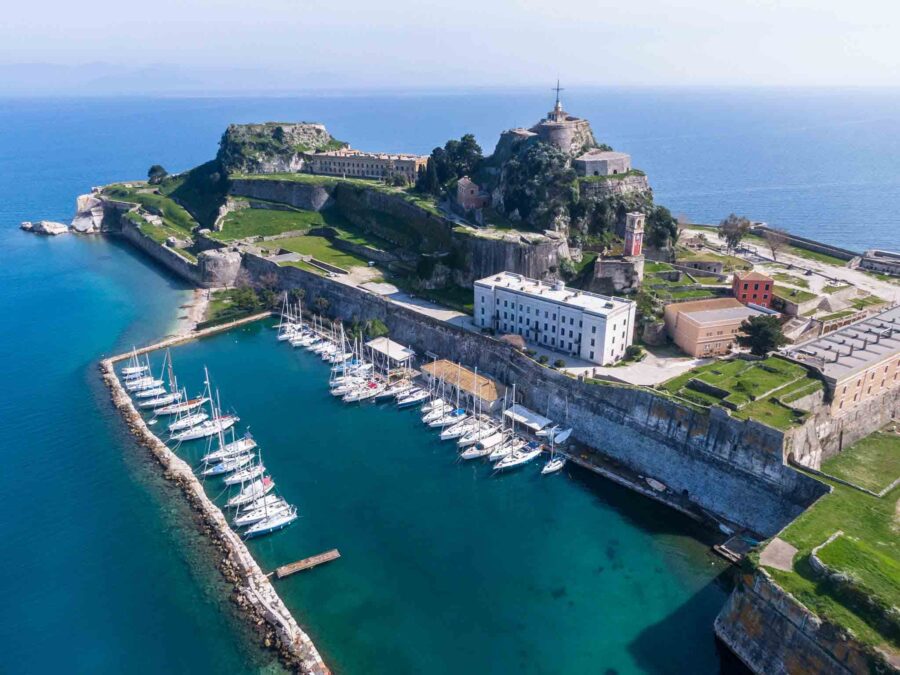
Traditional tavernas around Little Venice feature live bouzouki music in Mykonos. Street performers and musicians add to the island’s vibrant atmosphere during summer evenings.
The Old Fortress in Corfu celebrates its rich musical heritage with regular concerts. Local bands play everything from Greek folk to jazz in Old Town’s squares. The island also hosts several cultural festivals throughout summer, featuring Greek dance performances and classical music.
Traditional Greek nights happen weekly at tavernas across both islands. These events include plate-smashing, folk dancing, and live Greek music.
Shopping and Commerce
Both islands offer distinct retail experiences, from traditional markets selling local goods to high-end designer boutiques. Mykonos leans toward luxury shopping, while Corfu mixes authentic Greek markets with modern retail spaces.
Local Markets

The Corfu Town Market buzzes with energy as vendors sell fresh produce, local olive oil, and handmade crafts. You’ll find stalls packed with kumquats – Corfu’s signature fruit – along with local honey and spices. The market opens early and stays busy until mid-afternoon.
Mykonos’s main market sits in Chora, featuring small shops selling traditional Greek products. Local artisans display handmade jewelry, ceramics, and textiles. The prices tend to run higher than Corfu due to the island’s upscale reputation.
Boutique Shops
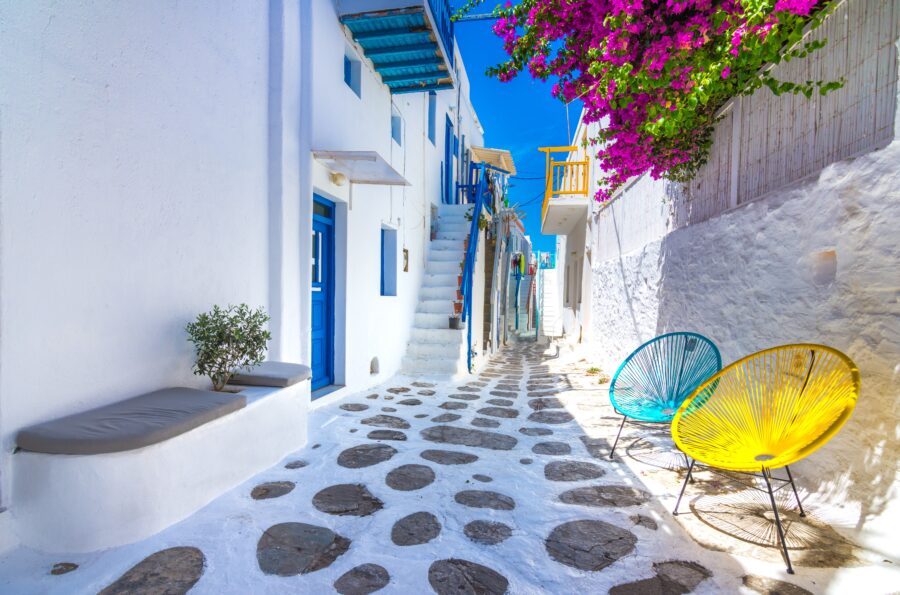
Mykonos stands out for its designer shopping scene. The narrow streets of Matoyianni host famous fashion brands like Louis Vuitton and Gucci. Small boutiques sell unique Greek designer pieces and handcrafted accessories.
Corfu’s shopping district centers around Liston and the Old Town. The shops here offer a mix of affordable fashion, local art, and authentic Greek goods. Many stores in Corfu stay open late during summer months, with some closing for afternoon breaks.
The Old Town features charming jewelry stores selling pieces made with local stones and precious metals. Gift shops line the main streets, offering everything from traditional worry beads to modern Greek fashion.
Dining and Cuisine
Both islands offer distinct culinary experiences shaped by their unique cultural influences and local ingredients. The food scenes range from upscale restaurants to family-run tavernas, each showcasing their own regional specialties.
Gourmet Experiences
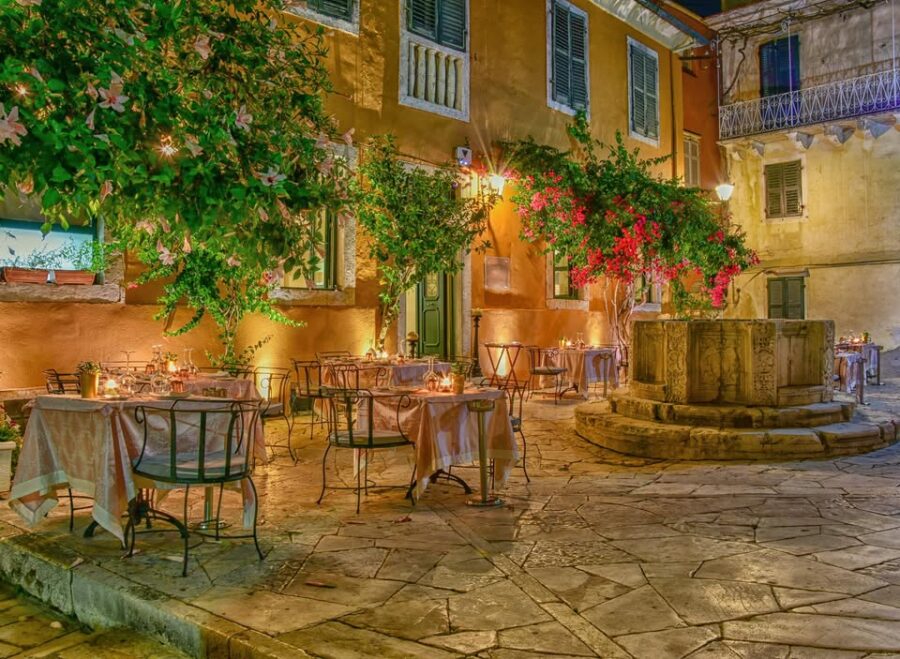
Mykonos boasts several high-end dining spots along Little Venice and Ornos Beach. Top restaurants like Interni and Nobu serve Mediterranean fusion dishes with stunning sunset views. Many places blend traditional Greek flavors with modern cooking techniques.
Corfu’s fine dining scene centers around Corfu Town. Places like The Venetian Well and Etrusco create innovative dishes using local ingredients. The French and Italian influences are clear in many upscale Corfiot restaurants.
Casual Dining Spots
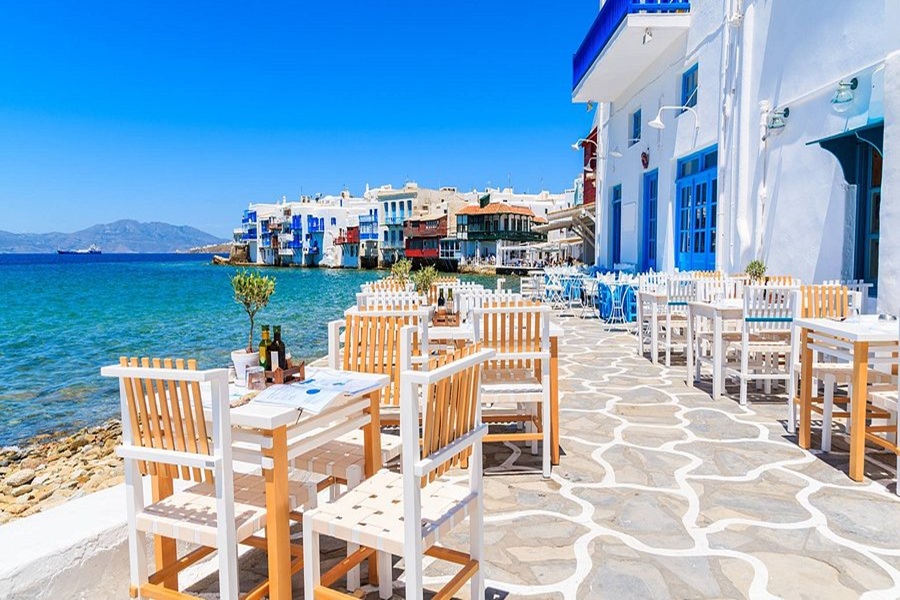
Mykonos has plenty of beachfront cafes and relaxed restaurants. Many serve fresh seafood, Greek mezedes, and light lunch options. Popular spots like Krama and Nice n Easy offer healthy Mediterranean dishes in laid-back settings.
Corfu’s casual eateries often feature British and Italian touches. You’ll find good pizza places, casual seafood spots, and international cuisine. Many restaurants around Paleokastritsa serve fresh catch-of-the-day specials.
The island’s signature kumquat liqueur appears in many casual restaurant desserts and drinks.
Traditional Greek Tavernas
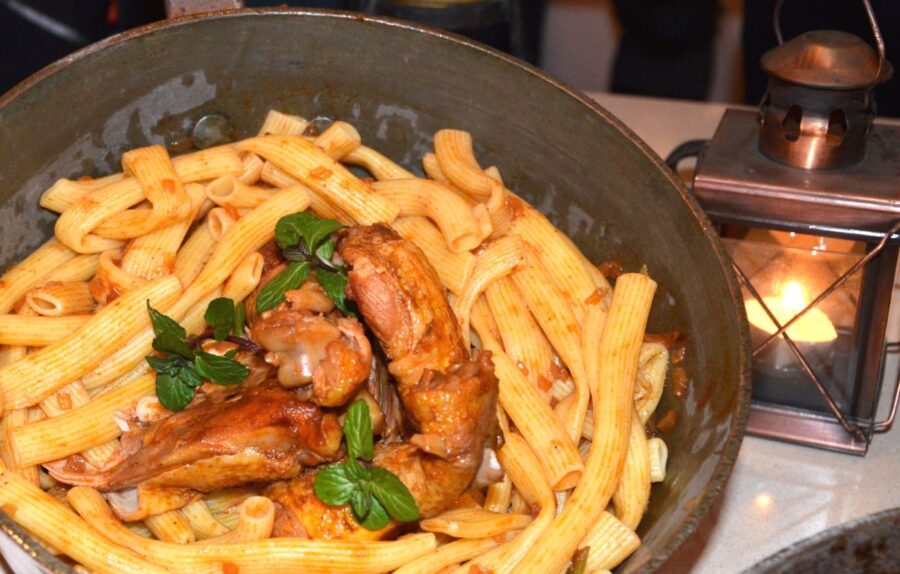
Mykonos keeps its taverna tradition alive in spots like Fokos and Kiki’s. These places serve grilled meats, fresh fish, and classic Greek dishes like moussaka. Most use family recipes passed down through generations.
Corfiot tavernas stand out with unique local specialties. Try pastitsada (spicy beef pasta) or sofrito (veal in wine sauce). Many tavernas in villages like Doukades and Kinopiastes serve authentic Corfiot dishes.
Local favorites include bourdeto (spicy fish stew) and bianco (fish cooked in white wine sauce). The portions are generous and prices tend to be reasonable.
Travel Tips and Practical Information
Smart planning makes a huge difference when visiting these Greek islands. Each destination has its own quirks and challenges that travelers need to prepare for.
Getting Around
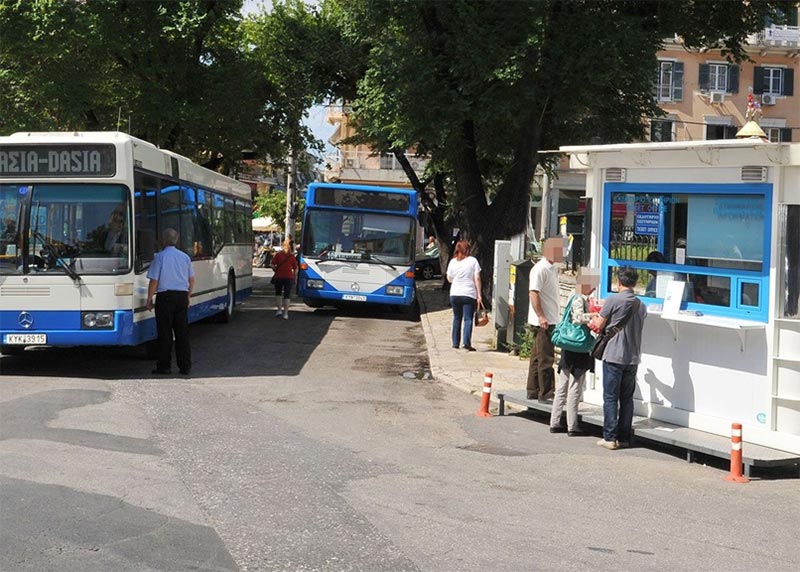
Both islands offer various transport options. Corfu has an extensive public bus system that connects major towns and beaches. Renting a car gives more freedom to explore the island’s hidden spots and mountain villages. Scooters work well for couples or solo travelers.
Mykonos relies heavily on its bus network during peak season. Taxis are limited and expensive. Water taxis connect popular beaches. Many visitors rent ATVs or motorbikes to zip between beaches and towns.
Both islands have airports with direct flights from Athens. The flight takes about 45 minutes. Ferry services connect them to other Greek islands and mainland ports.
Language and Communication
English is widely spoken in tourist areas of both islands. Basic Greek phrases like “kalimera” (good morning) and “efharisto” (thank you) can help break the ice with locals.
Street signs in tourist zones use both Greek and Latin letters. Most restaurant menus come in multiple languages.
Phone service and WiFi are reliable in towns. Remote beaches might have spotty coverage. Getting a local SIM card is easy at any phone shop with your passport.
Currency and Expenses
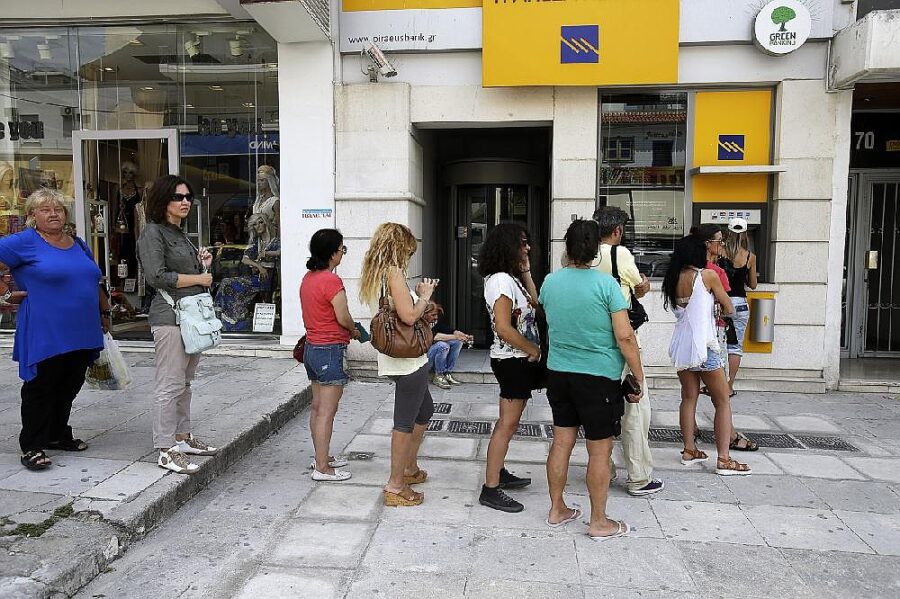
Greece uses the Euro (€). ATMs are common in towns but can run out of cash during peak season. Credit cards work in most places.
Price ranges for common expenses:
- Mid-range hotel: €100-200/night
- Local meal: €15-25/person
- Beach chair rental: €5-15/day
- Taxi from airport: €20-35
Mykonos tends to be pricier than Corfu. Book ahead during July-August when prices spike. Many places offer discounts in spring and fall.
Frequently Asked Questions
Travelers choosing between these two iconic Greek islands want specific details about their distinct characteristics, experiences, and atmospheres to make the best choice for their vacation style.
What unique attractions distinguish Corfu from Mykonos for travelers seeking a cultural experience?
Corfu’s UNESCO-listed Old Town features Venetian fortresses, French-style arcades, and British colonial buildings. These architectural gems reflect the island’s rich history under various European rulers.
The narrow streets of Mykonos Town showcase traditional Cycladic architecture with white-washed buildings and blue domes. The iconic windmills stand as symbols of the island’s past, while Little Venice offers waterfront dining with sunset views.
How do the nightlife and party scenes compare between Mykonos and Corfu?
Mykonos reigns as Greece’s premier party destination, with world-famous DJs performing at beach clubs like Cavo Paradiso and Paradise Club. The island buzzes with energy from sunset until sunrise.
Corfu offers a more laid-back nightlife scene centered around Corfu Town. Local tavernas, bars, and music venues provide entertainment without the intense party atmosphere of Mykonos.
In terms of beaches and natural beauty, how do Corfu and Mykonos differ for visitors looking for relaxation?
Corfu’s landscapes feature lush green hills, olive groves, and cypress trees meeting the sea. The island’s west coast beaches offer dramatic cliffs and sunset views.
Mykonos presents a more arid landscape with golden beaches and crystal-clear waters. Paradise Beach and Super Paradise Beach rank among the most popular spots for swimming and sunbathing.
Which island, Corfu or Mykonos, offers a more authentically Greek atmosphere and local experience?
Corfu maintains strong local traditions and a distinctly Greek way of life, especially in mountain villages. Locals still practice traditional olive harvesting and wine-making methods.
Mykonos has evolved into a cosmopolitan destination where international influences mix with Greek culture. The island caters more to luxury tourism than traditional Greek living.
For those interested in history and architecture, how does the heritage of Corfu contrast with that of Mykonos?
Corfu’s architecture reflects its diverse rulers, from Venetian bell towers to British palaces. The Achilleion Palace, built for Empress Elisabeth of Austria, showcases neoclassical grandeur.
Mykonos features simpler architectural styles with the Paraportiani Church complex and Maritime Museum housed in a traditional captain’s mansion. These buildings tell stories of the island’s seafaring past.
Considering food and cuisine, what culinary delights can one expect when choosing between Corfu and Mykonos?
Corfu’s cuisine shows Italian influences. You can try dishes like pastitsada (spiced beef with pasta) and sofrito (veal in wine sauce). The island also produces exceptional olive oil and kumquat liqueur.
Mykonos specializes in fresh seafood and traditional Greek dishes. Local specialties include kopanisti (spicy cheese) and louza (cured pork).
